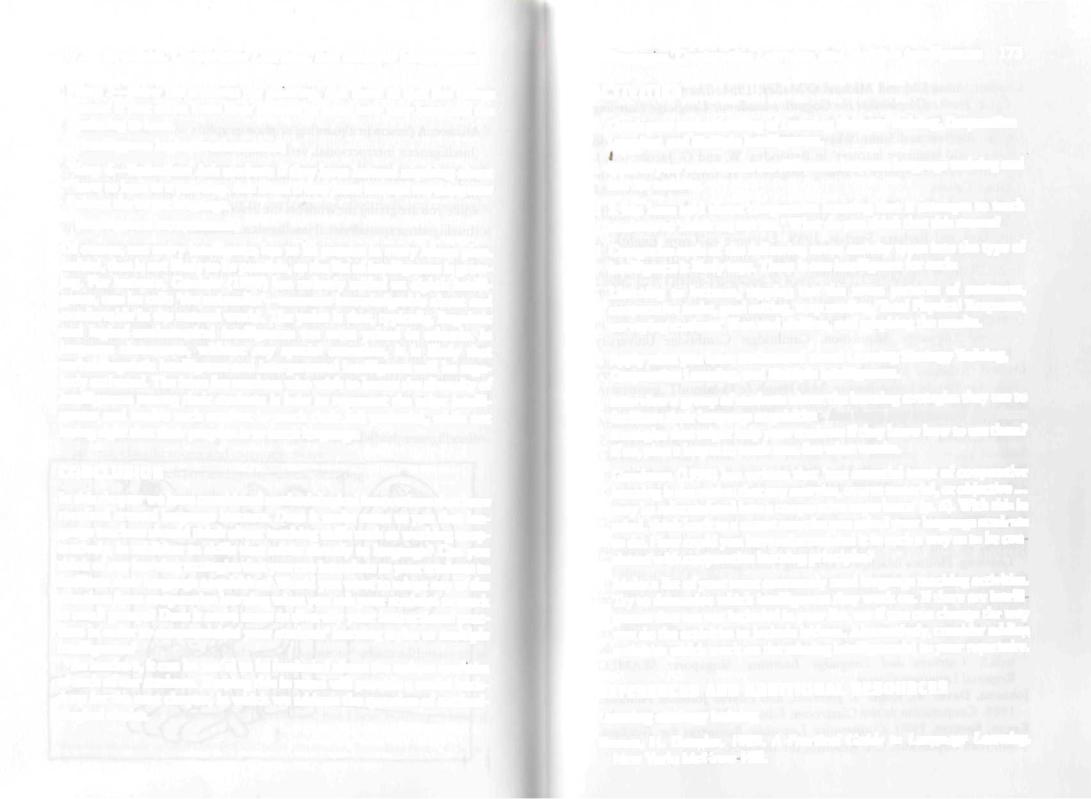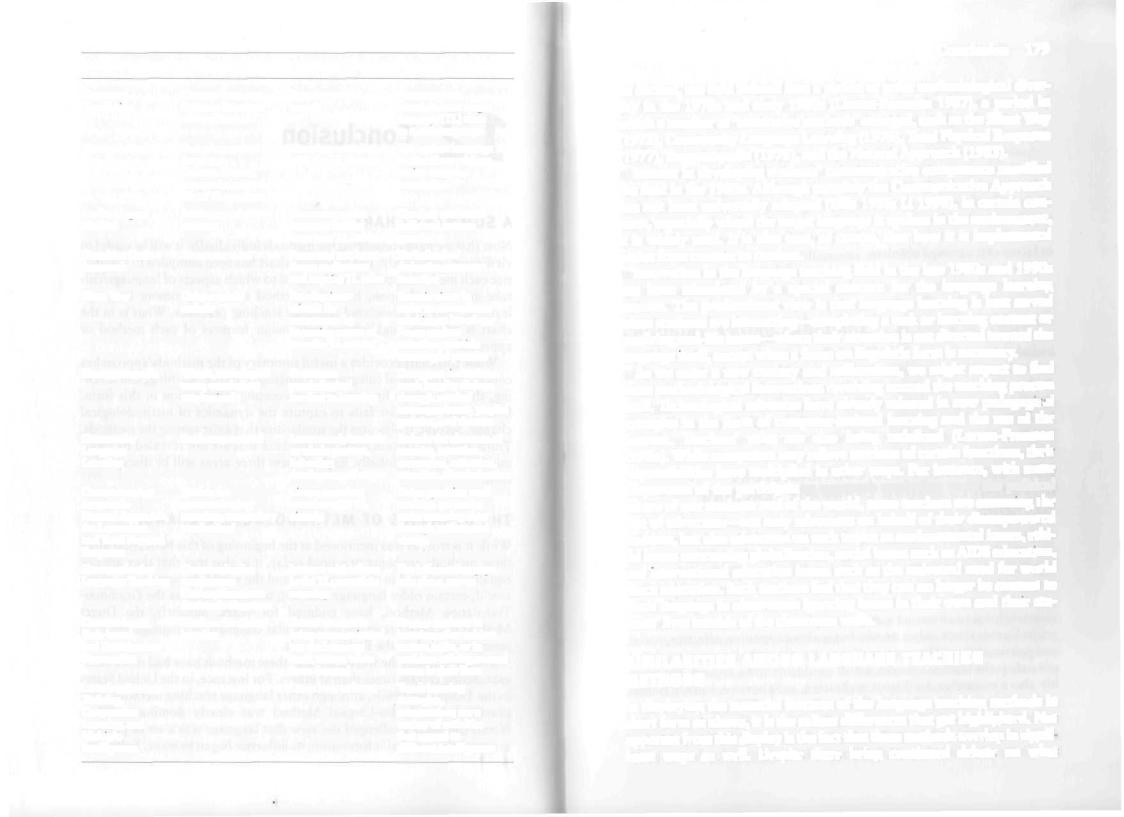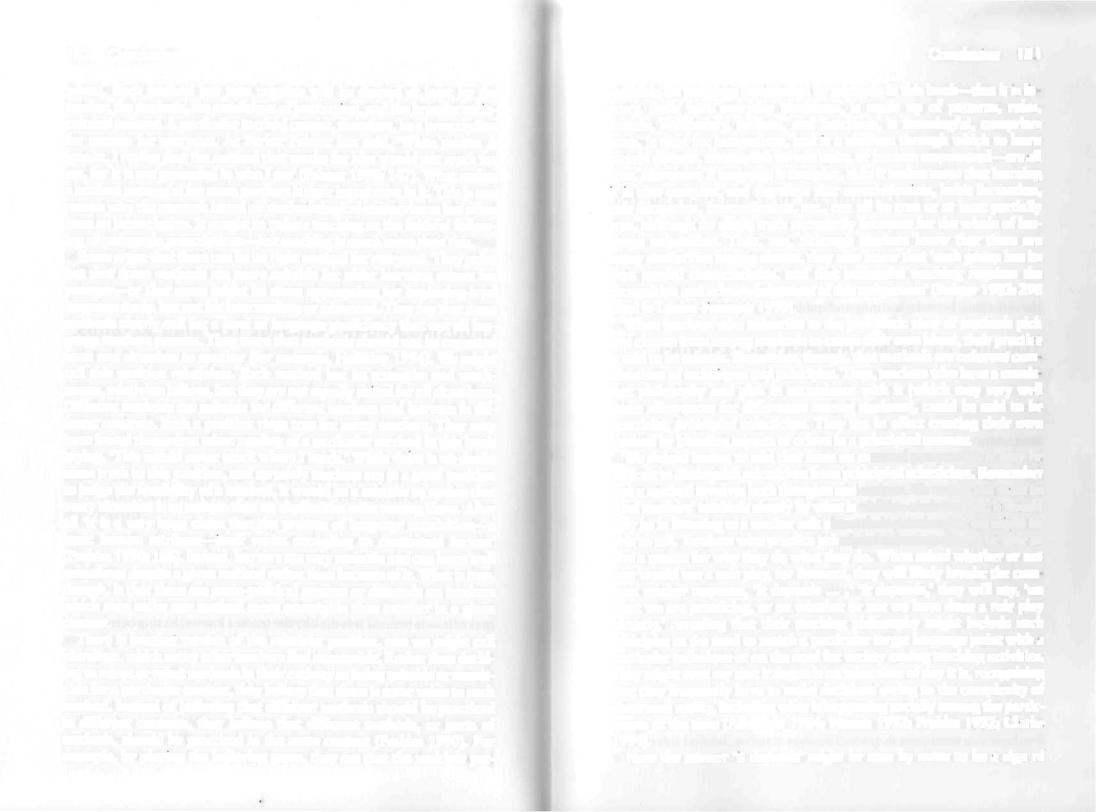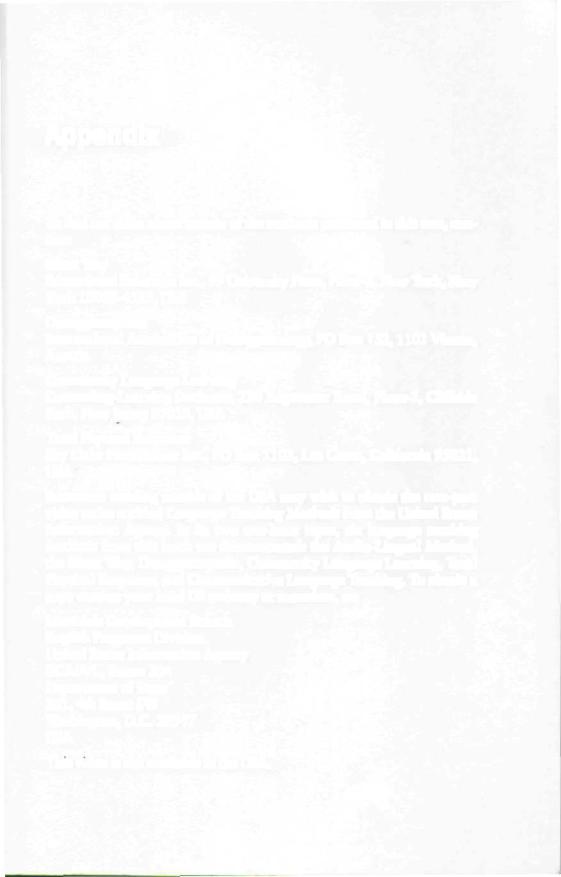
Techniques and Principles in language teaching
.pdf
172 Strategies, Cooperative Learning, and Multiple Intelligences
Step 5—Show the students the painting. Ask them to find five things about it that differ from their tableau or from how they imagined the painting to look.
(Intelligence: logical/mathematical)
Step 6—Reflection: Ask students if they have learned anything about how to look at a painting. Ask them if they have learned anything new about the target language.
(Intelligence: intrapersonal)
Of course, not every intelligence has to be present in every lesson plan. Indeed, that is not likely to be possible, as the list of intelligences is growing. Fot instance, Gardner (1999) has recently added an eighth intelligence, one he calls 'the naturalist'—someone knowledgeable about and comfortable in the natural world. The point is that, typically, linguistic and logical-mathematical intelligences are most prized in schools. In language classrooms, without any special attention, it is likely that verbal/linguistic intelligence and interpersonal intelligence will be regularly activated. The issue for teachers who wish to honor the diversity of intelligences among their students is how to represent the other intelligences and enable each student to reach their full potential, while not losing sight that their purpose is to teach language.
CONCLUSION
In this chapter we have considered methodological innovations that have revolved around language learners. Does it make sense to you that language teachers should think about teaching skills such as working cooperatively, in addition to skills that relate directly to language? Can you think of any learning strategies that you can introduce to your students to facilitate their language acquisition? Would you want to adopt any of the practices from cooperative learning when you ask your students to work in small groups? Does it make sense to diversify your instructional practices in order to accommodate your students' learning styles or multiple intelligences?
As teachers, it can be useful to be reminded about the unique qualities of each of our students. Keeping this in mind will provide a useful backdrop for the next chapter, in which we address the question of methodological choice.
Strategies, Cooperative Learning, and Multiple Intelligences |
173 |
ACTIVITIES
ACheck your understanding of Learning Strategy Training, Cooperative Learning, and Multiple Intelligences.
1State in your own words the difference between language training and learner training.
2It has been said about cooperative learning that it attempts to teach students to 'think us, not me.' What do you think that this means?
3Categorize each of the following seven activity types into the type of intelligence it likely taps. There is one intelligence for each:
Listening to lectures, tapping out the stress patterns of sentences, cooperative tasks, goal setting, map reading, Total Physical Response, surveying students' likes and dislikes, and graphing the results.
BApply what you have understood about Learning Strategy Training, Cooperative Learning, and Multiple Intelligences.
1Interview a group of students about the learning strategies they use to facilitate their language acquisition. Are there any patterns? Are there strategies that might help your students if they knew how to use them? If so, plan a lesson to teach one. See what results.
2Goodman (1998) has written that 'one essential tenet of cooperative learning is the notion that any exercise, course material, or objective ...
may be reformulated into a cooperative experience' (p. 6). With this in mind, think back to a recent exercise you asked your language studi-nK to do. How could you have reformulated it in such a way as to be con sistent with cooperative learning principles?
3 Make a list of your most commonly used language teaching activities. Try to determine which intelligences they work on. If there are intelli gences that are not included in your list, see if you can change tinway you do the activities to include it/them. Alternatively, consider adding activities which work on the missing intelligcnce(s) to your repertoire.
REFERENCES AND ADDITIONAL RESOURCES
Learning strategy training
lirown, H, Douglas. I9K9. A Practical Guide in Language Learning.
New York: Mcdniw Hill,

174 Strategies, Cooperative Learning, and Multiple Intelligences
Chamot, Anna Uhl and Michael O'Malley. 1994. The CALLA Handhook: How to Implement the Cognitive-academic Language Learning Approach. Reading, MA: Addison-Wesley.
Cohen, Andrew and Susan Weaver. 1998. 'Strategies-based instruction for second language learners1 in Renandya, W. and G. Jacobs (eds.).
Learners and Language Learning. Singapore: SEAMEO Regional Language Center.
Dickinson, Leslie. 1987. Self-instruction in Language Learning. Cambridge: Cambridge University Press.
Ellis, Gail and Barbara Sinclair. 1989. Learning to Learn English: A Course in Learner Training. Cambridge: Cambridge University Press.
Grabe, William and Fredricka Stoller. 1997. 'Content-based instruction: Research foundations' in Snow, M. A. and D. Brinton (eds.). The Con- tent-based Classroom, White Plains, NY: Addison-Wesley Longman.
O'Malley, Michael and Anna Uhl Chamot. 1990. Learning Strategies in Second Language Acquisition. Cambridge: Cambridge University Press.
Oxford, Rebecca. 1989. Language Learning Strategies: What Every Teacher Should Know. Boston, MA: Heinle & Heinle.
Rubin, Joan. 1975. 'What the "good language learner" can teach us.'
TESOL Quarterly 9: 41-51.
Wenden, Anita. 1985. 'Learner strategies.' TESOL Newsletter 19/1:4-5, 7.
Wenden, Anita and Joan Rubin. 1987. Learner Strategies in Language Learning. Englewood Cliffs, NJ: Prentice-Hall.
Cooperative learning
Dishon, D. and P. W. O'Leary. 1984. A (Guidebook for Cooperative Learning. Holmes Beach, FL: Learning Publications.
Goodman, Mitchell. 1998. 'Cooperative learning.' The English Connection: The Newsletter of Korea Teachers of English to Speakers of Other
Languages 2/3: 1, 6-7.
Jacobs, George. 1998. 'Cooperative learning or just grouping students: The difference makes a difference' in Renandya, W. and G. Jacobs (eds.). Learners and Language Learning. Singapore: SEAMEO Regional Language Center.
Johnson, David W., Roger T. Johnson, and Edythc Johnson Holubec. 1988. Cooperation in the Classroom. Edina, MN: Interaction Rooks.
Kagan, Spencer. 1990. Cooperative Learning: Resources for Teachers.
San Juan Capistrano, CA: Resource for Teachers.
Strategies, Cooperative Learning, and Multiple Intelligences |
175 |
Kessler, Carolyn, (cd.). 1992. Cooperative Language Learning: A
Teacher's Resource Book. Englewood Cliffs, NJ: Prentice Hall Regents.
Slavin, Jt. 1995. Cooperative Learning. (2nd edn.) Boston, MA: Allyn & Bacon.
Learning styles
Hatch, Evelyn. 1974. 'Second language learners—universals?' Working
Papers on Bilingualism 3: 1-17.
Larsen-Frceman, Diane and Michael H. Long. 1991. An Introduction to
Second Language Acquisition Research. London: Longman.
Levin, J., P. Divine-Hawkins, S. Kcrst, and J. Guttman. 1974. 'Individual differences in learning from pictures and words: The development and application of an instrument.' Journal of Educational Psychology
66/3: 296-303.
Multiple intelligences
Armstrong, Thomas 1993. Seven Kinds of Smart: Discovering and Using your Natural Intelligences. New York: Plume/Penguin.
Armstrong, Thomas 1994. Multiple Intelligences in the Classroom.
Alexandria, VA: ASCD.
Christison, Mary Ann. 1996. 'Teaching and learning language through multiple intelligences.1 TESOL Journal Autumn: 10-14.
Gardner, Howard. 1983. Frames of Mind: The Theory of Multiple Intelligences. New York: Basic Books.
Gardner, Howard. 1993. Multiple Intelligences: The Theory in Practice.
New York: Basic Books.
Gardner, Howard. 1999. 'Who owns intelligence?' The Atlantic Monthly Feburary 1999: 67-76.
Lazear, David. 1997. Seven Ways of Teaching: The Artistry of Teaching with Multiple Intelligences, (rev. edn.) Arlington Heights, IL: Skylight Publishing.

12 Conclusion
A SUMMARY CHART
Now that we have considered the methods individually, it will be useful to view them collectively. The following chart has been compiled to summarize each method/approach with regard to which aspects of language/culture are focused upon, how the method seeks to promote language learning, and the associated language teaching practices. What is in the chart is selective, highlighting only major features of each method or approach.
While this chart provides a useful summary of the methods/approaches concerning the global categories of language/culture, learning, and teaching, there are three limitations to presenting information in this form. One is that this chart fails to capture the dynamics of methodological change. Second, it obscures the similarities that exist among the methods. Third, there are certain areas of difference that are not revealed by treating the categories globally. Each of these three areas will be discussed in turn.
THE DYNAMICS OF METHODOLOGICAL CHANGE
While it is true, as was mentioned at the beginning of this book, that all of these methods are being practiced today, it is also true that they are not equally distributed in classrooms around the world. In some parts of the world, certain older language teaching methods, such as the GrammarTranslation Method, have endured for years. Similarly, the Direct Method has been preserved in particular commercial language teaching enterprises, such as the Berlitz Schools.
In other parts of the world, some of these methods have had more influence during certain times than at others. For instance, in the United States in the 1950s and 1960s, although other language teaching methods were practiced, the Audio-Lingual Method was clearly dominant. When Noam Chomsky challenged the view that language was a set of patterns acquired through habit formation, its influence began to wane. Following

Method/Approach |
Language/Culture |
Language Learning |
Language Teaching |
Grammar- |
Literary language |
Exercise mental |
Have students |
Translation |
Culture: litcralure |
muscle |
translate from target |
|
and the fine arts |
|
language (TL) texts |
|
|
|
to native language |
Direct Method |
Everyday spoken |
Associate meaning |
Use spoken language |
|
language |
with the TL directly |
in situations with no |
|
Culture: history, |
|
native-language |
|
geography, everyday |
|
translation |
|
life of TL speakers |
|
|
Audio-Lingual |
Sentence and sound |
Overcome native |
Conduct oral/aural |
Method |
patterns |
language habits; |
drills and pattern |
|
|
form new TL habits |
practice |
Cognitive Code |
Grammar rules |
Form and test hypo- |
Do inductive/ |
Approach |
|
theses to discover |
deductive grammar |
|
|
and acquire TL rules |
exercises |
Silent Way |
Unique spirit/ |
Develop inner |
Remain silent in |
|
melody |
criteria for |
order to subordinate |
|
|
correctness by |
reaching to learning. |
|
|
becoming aware of |
Hocus student |
|
|
how theTL works |
attention; provide |
|
|
|
meaningful practice |
Desuggestopedia |
Whole, meaningful |
Overcome |
Desuggest limitations: |
|
texts; vocabulary |
psychological |
teach lengthy dialogs |
|
emphasi7ed |
barriers to learning |
through musical |
|
|
|
accompaniment, playful |
|
|
|
practice, and rhe arts |
Community |
Student generated |
Learn nondefensively |
Include the elements of |
Language |
|
as whole persons, |
security, attention, |
Learning |
|
following |
aggression, reflection, |
|
|
developmental stages |
retention, discrimination |
Comprehension |
Vehicle for |
Listen; associate |
Delay speaking until |
Approach: |
communicating |
meaning with TL |
studeTits are ready; |
Natural Approach, |
meaning; vocabulary |
directly |
make meaning clear |
the Learnables, |
emphasized |
|
through actions and |
and Total Physical |
|
|
visuals |
Response |
|
|
|
Communicative |
Communicative |
Interact with others |
Use information gaps, |
Language Teaching |
competence |
in the TL; negotiate |
role plays, games |
|
Notions/functions |
meaning |
|
|
Authentic discourse |
|
|
Content-based, |
Medium fordoing/ |
Attend to what is |
Engage students in |
Task-based, |
learning |
being communicated, |
learning other subject |
and Participatory |
|
not the language |
matter, tasks, or in |
Approaches |
|
itself, except when |
problem-solving around |
|
|
form-foe used |
issues in rheir lives |
Learning Strategy |
|
Learn how to learn |
Teach learning |
Training, |
|
|
strategies. |
Cooperative |
|
|
cooperation; use a |
Learning, and |
|
|
variety of activities |
Multiple |
|
|
that appeal to |
Intelligences |
|
|
different intelligences |
Conclusion |
179 |
its decline, the field entered into a period of great methodological diversity in the 1970s and early 1980s (Larsen-Freeman 1987), a period in which a number of 'innovative methods' emerged, such as the Silent Way (1972), Community Language Learning (1976), Total Physical Response (1977), Suggestopedia (1978), and the Natural Approach (1983).
Interest in developing students' communicative competence reunified the field in the 1980s. Although certainly the Communicative Approach has not been universally adopted (Ellis 1996; Li 1998), in certain contexts, especially where the target language is spoken in the environment, it is widely used. It is also true, of course, that how it is implemented varies from context to context.
Innovation in the language teaching field in the late 1980s and 1990s has been stimulated by a special concern for the language learning process. The predominant view is that language learning is best served when students are interacting—completing a task or learning content or resolving real-life issues—where their attention is not directed toward the language itself, except when a focus on linguistic form is necessary.
As we enter a new century and millennium, we might expect to find more methodological innovations revolving around the teaching pTOCCM itself. Technological advances have already ushered in new pedagogn.il strategies in the form of computer-assisted learning and the use nl the Internet. Teachers' roles are also being redefined (Larsen-Freeman 1998a). While computers may relieve teachers of certain functions, theil responsibilities have multiplied in other ways. For instance, with sonM proponents of the participatory approach reminding us of the political nature of our students and of the world, some teachers are assuming i be role of advocates—not only advocates on behalf of their disempowered students, but also advocates on such topics as environmental issues, ethical issues concerning globalization, social issues such as AIDS education, and international education issues such as the universal need for world peace education. Such teachers feel that they can no longer be content to teach language in classrooms ignoring issues in their own and their students' lives outside of the classroom walls.
SIMILARITIES AMONG LANGUAGE TEACHING METHODS
In displaying the essential features of the language teaching method! in chart form as above, it is the salient differences that get highlighted. Noi apparent from this display is the fact that tkeM methods overlap iii lignii leant ways at well. Despite there being continued debate on whai

180 Conclusion
communication entails, and on the means to bring it about, it is nevertheless true that one of the most important similarities in many of these methods is that their goal has been to teach students to communicate in the target language.
Another similarity, which has only recently become obvious, is that all of the language teaching methods described in this hook are practiced in classrooms in schools. With the increasing influence of technology, such may not be the case in the future. Classroom instruction is already often supplemented with visits to the audio or computer lab. In certain situations, distance learning may make classes, fixed schedules, and learning in facc-to-face groups obsolete.
Finally, it is interesting to note that most of these methods seem to treat culture implicitly, having no clearly articulated view of it or its teaching. Certain methods, such as Desuggcstopedia, make use of the fine arts, hut the arts themselves are not the object of study; rather they are drawn upon to facilitate the acquisition of the target language. Where culture is included, it may be seen as a 'fifth' skill, another skill to teach in addition to reading, writing, speaking, and listening. Alternatively, there may be a deliberate attempt, in the case of those who teach English as an international language, to omit explicit teaching of culture, even though we know that culture values are transmitted through language (Kramsch 1993) and language teaching methods.
COMPLEMENTARY AND CONTRADICTORY DIFFERENCES AMONG LANGUAGE TEACHING METHODS
There are also differences among the methods, which get lost on such a selective chart as ours. There are two particular kinds of differences. The first is one we might call complementary differences. While each method may emphasize a different perspective on a learner, a teacher, learning, etc., taken together, they do not necessarily contradict each other, but rather help us to construct a more complete view. For instance, the language learner is not only a mimic, but is also a cognitive, affective, social, and political being. The same applies to the role of the language teacher— not only is the teacher a model, a drill conductor and a linguist, but possibly also a counselor, facilitator, technician, collaborator, learner trainer, and most recently, an advocate (Larsen-Freeman 1998a).
The other type of difference is one that is contradictory. For instance, notice that the use of the students' native language in the Direct Method and Comprehension Approach (Chapter 8) is proscribed, whereas in the
Conclusion 181
Grammar-Translation Method and Community Language Learning, it is prescribed. Witness the divergent views regarding the level of control of the input that learners receive, from highly controlled input in the AudioLingual Method, to less controlled in the Natural Approach, to virtually uncontrolled in task-based, content-based, and participatory approaches. Contrast the views regarding what to do with learners' errors, which range from doing everything to prevent them in the first place (AudioLingual Method), to ignoring them when they are made under the assumption that they will work themselves out at some future point (for example, TPR).
There are no doubt other differences as well. However, it is the existence of contradictory differences that leads us to the question we will be discussing next: How is a teacher to choose?
CHOOSING AMONG LANGUAGE TEACHING METHODS
At the end of this book a very reasonable question to ask is, 'How does a teacher decide which method is best?' After all, while we have seen thai many of the methods presented in this book have characteristics in com mon, there are also some fundamental differences among them. And so in the end, one does need to choose. And 'if we intend to make choices that are informed and not just intuitive or ideological, then we need to expend no little effort first in identifying our own values, next in tying those v;tl ues to an appropriate set of larger aims, and only then devising or rejet i ing, adopting or adapting techniques' (Stevick 1993: 434; see also Edge 1996),
For some teachers, the choice is easy. These teachers find thai a ptrtit ular method resonates with their own values, experience, and tiind.iiiun tal views about teaching and learning. It fits with what they are try in;1, W achieve and it is appropriate to their students and their context. We mighi call the position such teachers adopt, when confronted with the issue ol methodological diversity, one of absolutism: One method is best. Wli.n makes it so is because it is the one the teacher knows, having been trained in it, and/or because it is consonant with the teacher's thinking (values, beliefs, assumptions), and/or because there is research evidence support ing it. Such teachers may choose to become specialists in a p.iriKiilar method; they may even pursue advanced level training in it.
Before being persuaded that one method is absolutely best, howi\fi, we should remember methods themselves are decontextualized. The) describe a certain ideal, bated on certain beliefs. They deal with what, how, and why. They say little or nothing about who/whom, when, and

182 Conclusion
where. Each method put into practice will be shaped at least by the teacher, the students, the conditions of instruction, and the broader sociocultural context. A particular method cannot, therefore, be a prescription for success for everyone. As Parker Palmer has said, 'When person A speaks, I realize that the method that works for him would not work for me, for it is not grounded in who I am' (Palmer 1998: 147). What makes a method successful for some teachers is their investment in it. This is one reason why the research based on methodological comparisons has often been so inconclusive. It sought to reduce teaching to the faithful following of pedagogic prescriptions—but teaching is much more than this.
Some argue that there can be no right method for everyone. They point out that some methods are more suitable for older learners; others for younger—or that some might be more appropriate for beginning-level language study, but not for intermediate or advanced. They say that some methods clearly call for a level of language proficiency that not all language teachers possess. They warn that methods should not be exported from one situation to another (for example, Holliday 1994). We might call this position relativism. Each method has its strengths and weaknesses, relativists believe, but they are not equally suited for all situations. Different methods are suitable for different teachers and learners in different contexts. Such a position rings true for many teachers. They may have found themselves when reading of a particular method in this book saying, 'This would never work where I teach.' While there is no doubt some truth to this position, and certainly teachers are in a good position to judge the feasibility of a method, it would be a mistake to reason that every situation is so unique that no similarities exist among them. After all 'it is a very large claim that the process of language acquisition—a basic human attribute—itself varies according to contextual factors' (Prabhu 1990:166). Indeed, learners are very versatile and can learn well sometimes despite a given method rather than because of it. What is true, though, is that there are socio-political reasons or demands on teachers which may make one method more acceptable than another in a given context.
There is another version of the relativist position, one we might call pluralism, which many other teachers find reasonable. Rather than deciding to adopt or reject methods in their entirety as being suitable or unsuitable for a particular context, they believe that there is some value to each method. Instead of believing that different methods should be practiced in different contexts, they believe that different methods, or parts of methods, should be practiced in the same context (Prabhu 1990). For example, by playing the believing game, they see that the multiple per-
Concluston \H \
spectives on language represented by methods in this book—thai it is In erary, deals with everyday situations, is made up of patterns, rulea, sounds, vocabulary, notions, and functions, is meaningful, comprim texts, is used for interactions, and is a medium through which to learn certain content, accomplish certain tasks, or become empowered—are .ill true. Moreover, if language is complex, then it makes sense that learning it is also complex, and therefore that associationism, habit formation, rule formation, interactionism, etc., can all be true or at least partially true, although no single truth necessarily accounts for the whole of language acquisition. Then, too, although teachers know that there arc many similarities among classes, they also know that 'each group has its own special characteristics, and that successful teaching requires the recognition and acknowledgement of this uniqueness' (Bolster 1983: 298 cited in Larsen-I'reeman 1990).
When teachers who subscribe to the pluralistic view of methods pick and choose from among methods to create their own blend, their prad i( G is said to be eclectic. Remember, though, that methods are coherent com binations of techniques and principles. Thus, teachers who have a consil tent philosophy and pick in accordance with it (which may very well make allowances for differences among students), could be s;iid to be practicing principled eclecticism. They are in effect creating their own method by blending aspects of others in a principled manner.
We should hasten to add that from an external perspective, it may Indifficult to distinguish eclecticism from principled eclecticism. Remember that a method involves both thoughts and actions. We would not w.mi to label teachers' methods simply by what is visible—their actions, li would only be in listening to a teacher talk about their practice that we miglii be able to tell. Teachers who practice principled eclectism should be iblc to give a reason for why they do what they do. When asked whether or n<M they would use a role play, for instance, they will likely invoke the com mon teacher response, 'It depends ... ,' 'It depends,' they will say, 'on what we are practicing, or on whether or not we have done a role play recently,' revealing that their teaching philosophy might include such principles as the need to match a particular target language point with .i particular technique or on the need for variety among teaching activii iet, They might even say that it depends on what time of day it is, recogni/.ing that they frequently have to make decisions owing to the complexity of classroom reality, including what is happening socially among the participants at the time (Allwright 1984; Nunan 1992; Prabhu 1992; Cl.irki1994).
Now the answer 'il depends' might be seen by sonic to be .i sign ol

184 Conclusion
teachers' avoiding taking a position. But 'it depends' answers might be taken by others as signs of the wisdom of practice. For teaching is full of contingencies that require a response in the moment which may be more intuitive than a manifestation of a conscious philosophical position. It is also true that with us human beings, there is often a gap between our intentions and our actions. And finally, it is true that many decisions are outside the control of teachers. They must teach for a test, for instance. Or they may have a class where students come with negative attitudes toward the study of language. Fanselow (1987) observes that perhaps as little as two percent of the variance that contributes to learning may he controlled by the teacher. And yet as he says, 'But so what? If learning equals one hundred percent, and lack of learning means anything less than one hundred percent, the two percent we are responsible for makes the difference between learning and not learning' (1987: 11).
TEACHING AS THE MANAGEMENT OF LEARNING
Teachers who teach as if their practice causes learning, while recognizing that they are not in control of all of the relevant factors, and that at the least they are in partnership with their students in this enterprise, can be true managers of learning.1 I am not speaking narrowly of classroom management, but rather more broadly of someone who can live with the paradox of knowing that teaching does not cause learning, all the while knowing that to be successful, one must act as if it does. And it is this commitment to unlocking the learning potential in each student that motivates a teacher to make informed methodological choices. Teachers who are managers of learning recognize in general that a number of methodological options exist, but they are guided in any particular moment by a compass consisting of a set of values, some knowledge and experience, and a commitment to (particular) learning outcomes. Such teachers do not despair in methodological profusion; they welcome it. They know that the more tools they have at their disposal, the better off they are in having a large repertoire to choose from when a teachable moment presents itself. They recognize that they must focus students' attention on the learning challenge, and then step back and respond in service to their learning.
When asked if they would use a particular technique, assign a particular reading passage, ask a particular question, they answer, 'It depends.' There may be times when a pattern drill is appropriate, or giving a gram-
1 Allwrjght (1984| was perh.ipsrlie first [o use this term.
Conclusion 185
mar rule, or an interactive task, or an activity which involves meaning negotiation, depending on the learning challenge or what the students are struggling with at the moment. 'It depends' statements provide us with evidence of the highly complex, interpretive, contingent knowledge which teachers/managers must possess in order to do their work.
THE DEVELOPMENT OF METHODOLOGY
But there is another important dimension to the question of teaching methods that must be considered. And that is that learning to teach is a developmental process (Freeman 1991); indeed, while there may not be any strict sequence of developmental stages in teaching, learning it is said to be a lifelong process. Thus, before concluding, I offer a brief autobiographical sketch of my own developmental as a teacher, as an illustration, one not meant to be a model (Larsen-Freeman 1998b).
When I was first learning to teach, I was trained in a particular method. Fortunately for me, I was oblivious to alternatives. I practiced one method exclusively, using the books that 1 had been given. I was learning to reach and all of my attention was on trying to the best of my ability to adhere to the method, while learning the classroom routines anil main taining some sense of decorum in the meantime. I was the teacher (while learning to be one) and was teaching (while learning to do so at the same time).
After a while, I grew dissatisfied with my teaching. I found that it h.ul reached a level where I could give less attention to what I was doing ind more to what my students were learning. The consequence w:is thai I did not like what I saw. I felt that there had to be a better method than the one 1 was practicing. I sought further education. What I discovered I nun this education was that although there were other methods, there was very lit tie agreement on the best way to teach. What was important though was for me to be able to rationalize what I was doing. 1 felt during ibis pli.isc of my development that I was no longer learning to reach. My view ol teaching had changed. I knew a lot, but I realized that there w;is ;i lui more to learn. I found that I was learning teaching. I no longer was preparing to do something. 1 was experiencing it, and I was learning -i great deal from the experience.
Learning teaching has sustained me for many years—and still does, even though my area of concern is now less language teaching than Ian guage teacher education. One of the problems with relating my expei i encein this fashion, is rhat it appears that my development .is a teacher is a linear process, with each stage being dacrete. This is not the case. I .mi

186 Conclusion
still learning to teach in some respects (such as every time I meet a new group of students for the first time) and I am still learning teaching. In fact, I am still learning about the subject matter that I have been teaching for over twenty years! However, I believe I can identify an additional chapter in my own story because I realize in retrospect that during my learning teaching phase I was still laboring under the assumption that at some point I could master teaching. Sure, there would always be some new developments in the field, but for the most part, I thought I could make room for them without upsetting ray practice very much. I was mistaken. I finally came to realize that I could never master teaching. Practically everything I needed to know, including my students, was always changing.
Language, learning, teaching are dynamic, fluid, mutable processes. There is nothing fixed about them (Larsen-Freeman 1997). I would characterize my third stage then as just learning. This is not the willful learning of teaching, but the egoless following of learning. Further, this learning is not a gerund; this learning is a participle. It is not something that results in a static product; it is a dynamic process. Learning in this sense means being open to what comes, relating to it, and becomingdif- ferent in its presence (Caleb Gattegno, personal communication). And by so doing, when I am able to do it, I am learning all the time.
Let me restate that 1 am not being prescriptive. I am simply describing my own experience. Different teachers no doubt have their own stories to tell. And surely one can mature professionally in this field by deepening one's practice in a particular method, rather than by switching methods. But what may be more common than is usually acknowledged is that each of our stories unfolds over our lifespans as teachers (Freeman and Richards 1993). And what seems to lead to the unfolding of the story is an eagerness to want to teach better—to reach more students more effectively. I have elsewhere stated that teaching is perhaps best served by teachers' cultivating an 'attitude of inquiry' (Larsen-Freeman 2000). Much is unknown about the teaching/learning process, and those teachers who approach it as a mystery to be solved (recognizing that some aspects of teaching and learning may be forever beyond explanation) will see their teaching as a source of continuing professional renewal and refreshment.
CONCLUSION
This, then, is what 1 hope this book ultimately accomplishes. By confronting the diversity of methods in this book, and by viewing their
Conclusion 187
thought-in-action links, I hope that you will be helped to arrive at your own conceptualization of how thought leads to actions in your teaching, and how, in turn, your teaching leads to desired learning in your students. What I hope your reading of this book has also done is challenged you to identify your values, and to question them, perhaps leading to reaffirmation, perhaps not. But teaching is not only thinking and holding certain values; it is also action. I hope, therefore, that this book has encouraged you to experiment with new techniques—to try them, observe the consequences, make adjustments, and then to try them again.
In order to move from ideology to inquiry, teachers need to inquire into their practice. They need to reflect on what they do and why they do it, and need to be open to learning about the practices and research of others. They need to interact with others, and need to try new practices in order to continually search for or devise the best method they can for who they are, who their students are, and the conditions and context of their teaching. It is to this quest that I hope this book has in a small way contributed.
ACKNOWLEDGMENTS
I have had the good fortune of speaking about various of the ideas discussed in this chapter at many different times and many different places in the last decade. I am grateful to colleagues in the United States, Canada, Brazil, Finland, Japan, Puerto Rico, France, Spain, Costa Rica, Egypt, Greece, Mexico, Thailand, Germany, Italy, the United Arab Emirates, Australia, and Colombia for the opportunities they have provided me.
REFERENCES AND ADDITIONAL RESOURCES
Allwright, Dick. 1984. 'The importance of interaction in classroom language learning.' Applied Linguistics 5/2: 156-71.
Bolster, A. 1983. 'Toward a more effective model of research on teaching.' Harvard Educational Review 53/3: 294-308.
Clarke, Mark. 1994. 'The dysfunctions of the theory/practice discourse.'
TFSOI. Quarterly 28/1: 9-26.
Edge, Julian. 1996. 'Cross-cultural paradoxes in a profession of values.'
TFSOI. Quarterly 30/1: 9-30.
Ellis, Greg. 1996. 'How culturally appropriate is the communicative approach?' F.nglish LanguageTeaching journal 50y'3: 213—18.
Fansclow, John. 1987. Breaking Rules: Generating and Exploring Alternatives in Language Teaching. New York: Longman.

188 Conclusion
Freeman, Donald. 1991. 'Mistaken constructs: Re-examining the nature and assumptions of language teacher education' in Alatis, J. E. (ed.).
Georgetown University Round Table on Languages and Linguistics
1991: Linguistics and Language Pedagogy. Washington, DC: Georgetown University Press.
Freeman, Donald and Jack Richards. 1993. 'Conceptions of teaching and the education of second language teachers.' TESOL Quarterly 27/2: 193-216.
Holliday, Adrian. 1994. Appropriate Methodology and Social Context.
New York: Cambridge University Press.
Kramsch, Claire. 1993. Context and Culture in Language Teaching.
Oxford: Oxford University Press.
Lars en-Freeman, Diane. 1987. 'From unity to diversity: Twenty-five years of language-teaching methodology.' t'orum XXV/4: 2-10. (Special Anniversary Issue).
Larsen-Freeman, Diane. 1990. 'On the need for a theory of language teaching' in Alatis, J. E. (ed.). Georgetown University Round Table on
Languages and Linguistics: The Interdependence of Theory, Practice and Research. Washington, DC: Georgetown University Press.
Lars en-Free man, Diane. 1997. 'Chaos/complexity science and second language acquisition.' Applied Linguistics 18/2: 141-65.
Lars en-Freeman, Diane. 1998a. 'Expanded roles of learners and teachers in learner-centered instruction' in Rcnandya, W. and G. Jacobs (eds.).
Learners and Language Learning. Singapore: SEAMEO Regional Language Center.
Larsen-Freeman, Diane. 1998b. 'Learning teaching is a lifelong process.'
Perspectives XXIV12: 5-11.
Larsen-Freeman, Diane. 2000. 'An attitude of inquiry.' Journal of Imagination in Language Learning 5:18-21.
Li, Defcng. 1998. '"It's always more difficult than you plan and imagine": Teachers' perceived difficulties in introducing the communicative approach in South Korea.' TESOL Quarterly 32/4: 677-703.
Nunan, David. 1992. Collaborative Language Learning and Teaching.
Cambridge: Cambridge University Press.
Palmer, Parker. 1998. The Courage to Teach. San Francisco: Jossey-Bass. I'rabhu, N. S. 1990. 'There is no best method—why?' TESOL Quarterly
24/2: 161-76.
Prabhu, N. S. 1992. 'The dynamics of the language lesson.' TESOL Quarterly 26/2: 225-41.
Stevick, Earl W. 1993. 'Social meanings for how we teach' in Alatis, J. E. (ed.). Georgetown University Round Table on Languages and
Conclusion 189
Linguistics 1992: Language, Communication, and Social Meaning.
Washington, DC: Georgetown University Press.

Appendix
To find out more about certain of the methods presented in this text, contact:
Silent Way
Educational Solutions Inc., 99 University Place, Floor-6, New York, New
York 10003-4555, USA
Desuggestopedia
International Association of Desuggestology, PO Box ] 32, 1101 Vienna,
Austria
Community Language Learning
Counseling-Learning Institutes, 230 Edgewater Road, Floor-2, Cliffside Park, New jersey 07010, USA
Total Physical Response
Sky Oaks Productions Inc., PO Box 1102, Los Gatos, California 95031,
USA
Educators residing outside of the USA may wish to obtain the two-part video series entitled Language Teaching Methods from the United States Information Agency. In its two one-hour tapes, six language reaching methods from this book are demonstrated: the Audio-Lingual Method, the Silent Way, Desuggestopedia, Community Language Learning, Total Physical Response, and Communicative Language Teaching. To obtain a copy contact your local US embassy or consulate, or:
Materials Development Branch
English Programs Division
United States Information Agency
ECA/A/L, Room 304
Department of State
301,4th Street SW
Washington, D.C. 20547
USA
This video is not available in the USA.
